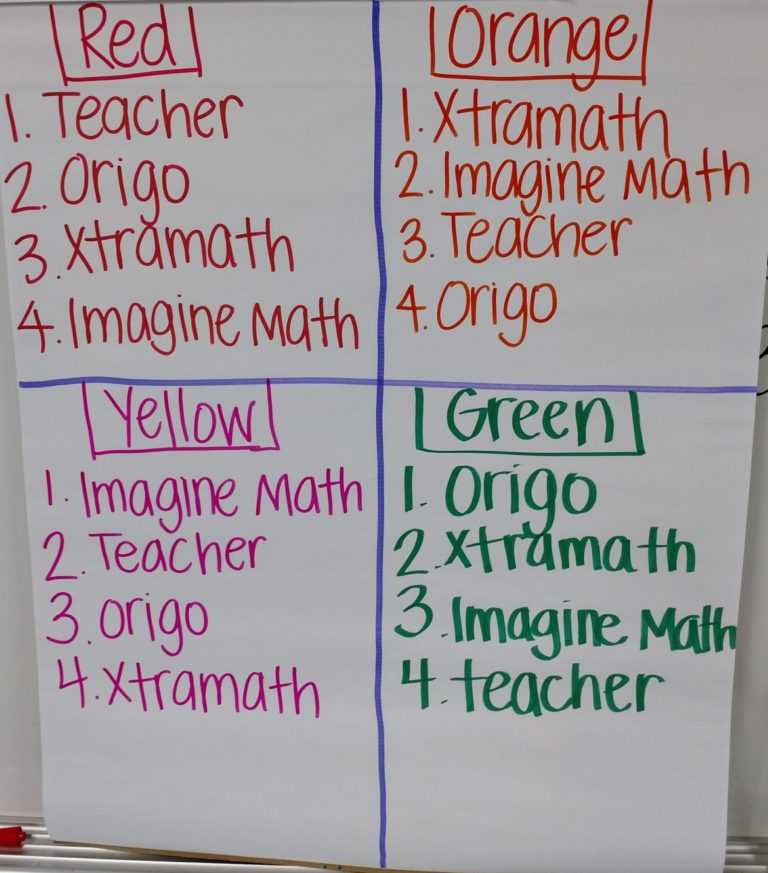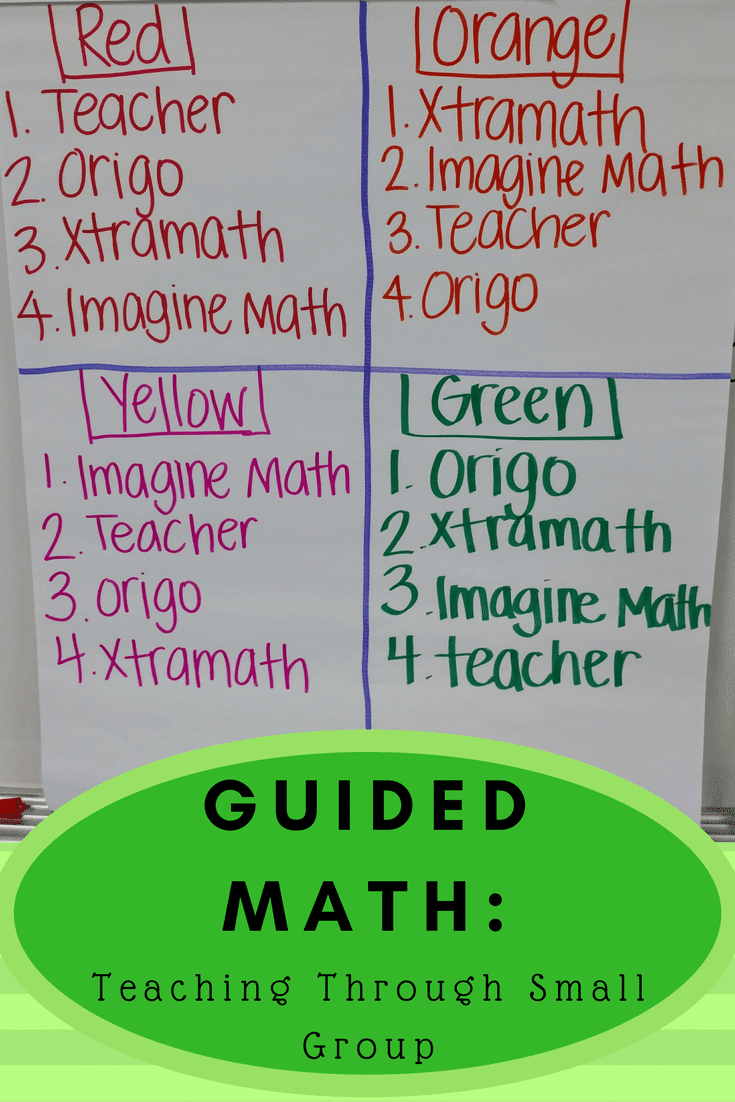Guided Math Groups – Teaching Small Group in Classroom
This post may contain affiliate links, which means I’ll receive a commission if you purchase through my links, at no extra cost to you. Please read full disclosure for more information.
I never in a million years thought I would be teaching using a guided math approach. Last year, I did one-on-one interventions, but rarely a small group lesson. I have always been a fan of doing whole group instruction, where the kids take notes as I go through the daily lesson. And, it worked. However, as I have mentioned in previous posts, my group of students this year are unlike any students I have ever encountered. They need the little extra help and motivation whole group doesn’t offer. Because of this, in order to make the biggest difference, I changed my entire classroom structure into using guided math groups to teach my lessons.
I work in a triad so I teach Math, another teacher teaches Science and Social Studies, and the third teacher teaches ELA. Due to the triad, I am given three 90 minute Math blocks. Per distric policy, we are required to do a 30 minute problem solving block, which is a blessing and a curse. Problem solving block is the time where I get to focus on state assessment like questions. I ensure that my students are able to apply the concepts we have previously learned successfully. To be honest though, thirty minutes isn’t always realistic. Sometimes, depending on the lesson, we aren’t always able to utilize the entire block. However, I set aside time for at least 15 quality minutes of problem solving.
After problem solving, I’m left with approximately 60 remaining minutes. If you teach Math, I’m sure you understand how little time that is. I begin by doing a quick 5-10 minute opening for the students who do the lesson prior to meeting with me during small group. After the opening period, we begin rotations. There are four rotations ranging from 10-15 minutes per session. Originally, I planned on three rotations, combining fluency and technology, but 7 kids per small group was too much of a distraction for my group of kids.
First Guided Math Group
My first rotation(red group) consists of my lowest students. These are the students I want to meet with first to see if I can build upon any knowledge gained through the opening. We meet, discuss the concept, and go through a few problems together from their workbook. They then immediately go back to their seats and begin completing the remainder of the problems assigned to them. When completed with their assignment, they will do Xtramath (Fluency) and then Imagine Math.
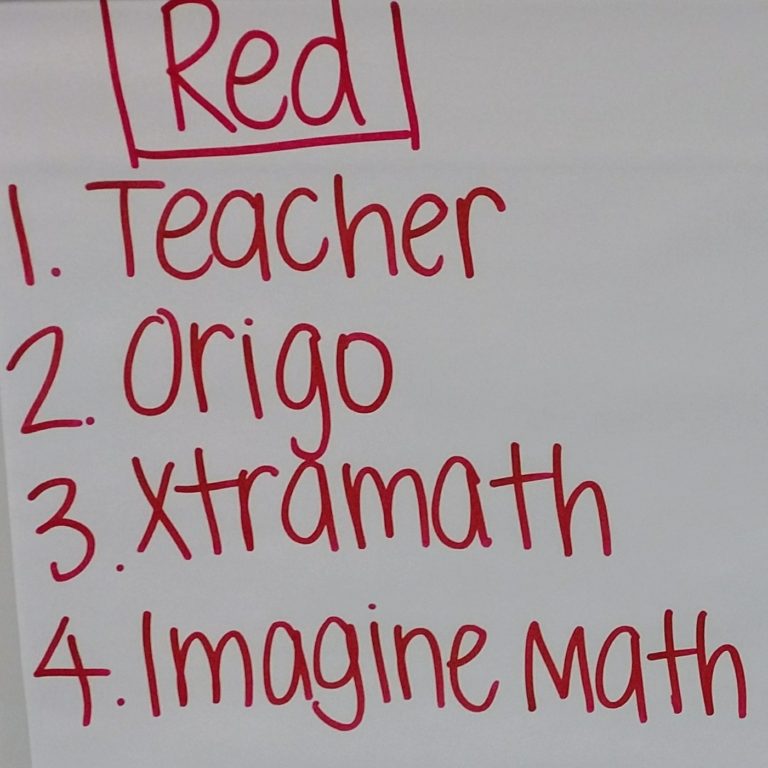
Second Rotation
My second rotation is the yellow group. These students are highly likely to pass, but aren’t quite at the advanced level. The goal for this group is to help push them in the right direction. Their rotations begin with Imagine Math and end with Xtramath.
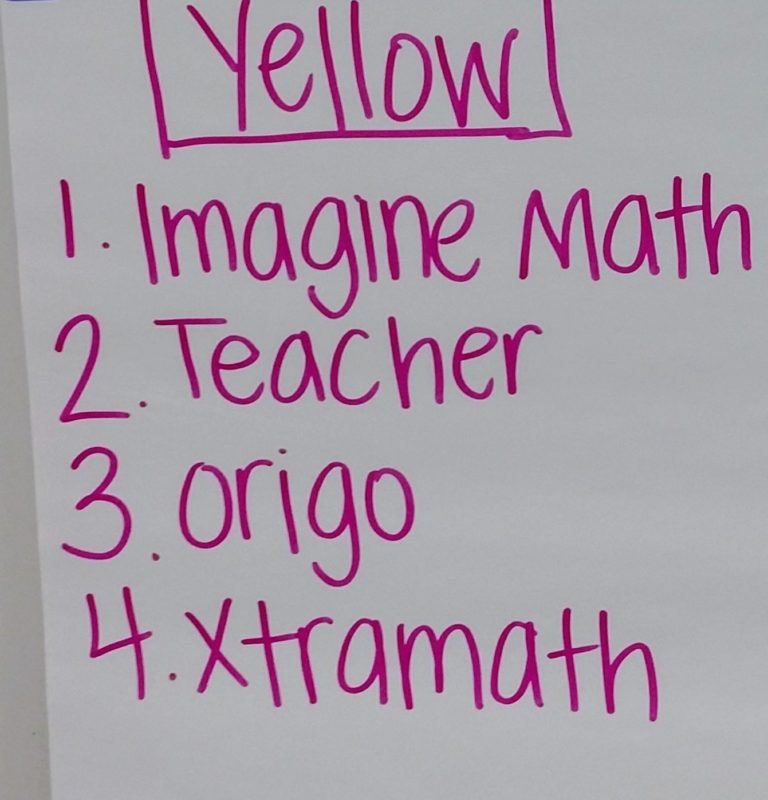
Third Guided Math Small Group
My third rotation (orange group) consists of my second lowest group of students, also known as my bubble kids. These students benefit from doing a fluency activity first and then meeting with me. I do the same lesson I did with my previous groups, adjusting as needed. When done, they complete their assigned work and then do Imagine Math.
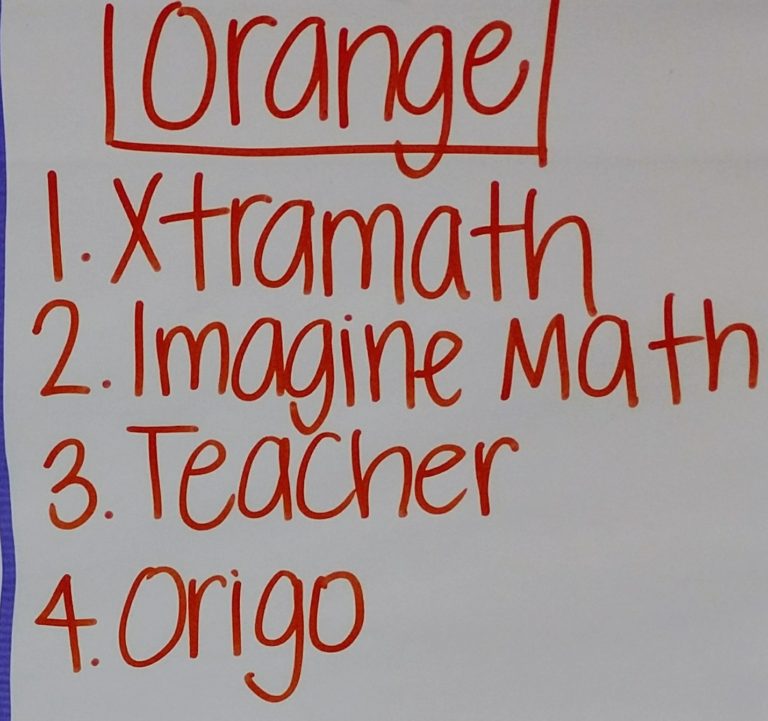
Last rotation:
My last rotation is the green group. This is my absolute highest group of kids. They are the ones who quickly complete their work and are in need of enrichment opportunities. My job during this time is to clear up any misconceptions and check for success. If they get all of the work correct, we are done meeting and they can continue Imagine Math or complete extra activities assigned to them. If they are not successful, I have the time to review the lesson with them. Most of the time, I am able to utilize this time by continuing to help other students in need.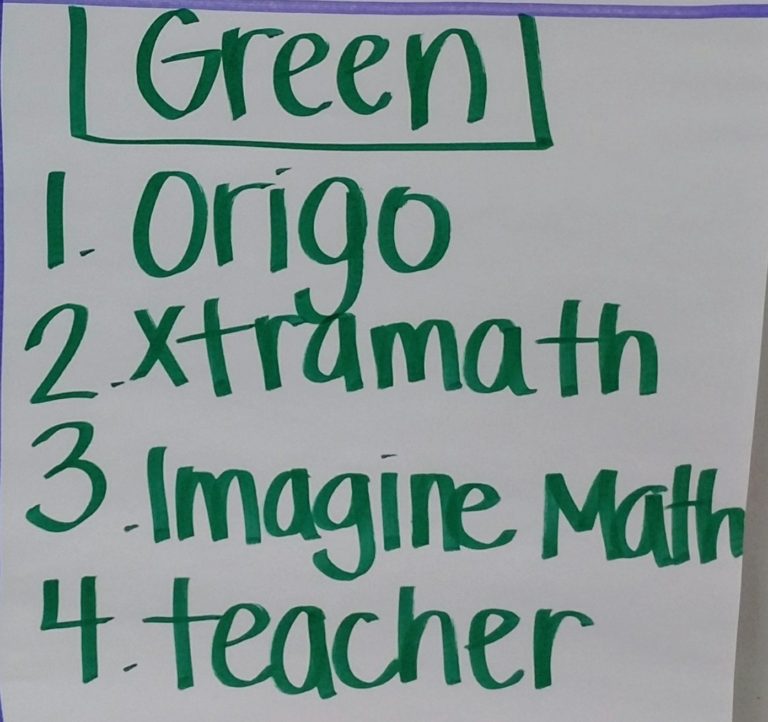
My classroom has changed drastically by switching to guided math groups. I went from having students struggle with basic addition to learning long division due to the individualization I can use during my group time.
If you have a rough group of kids, I highly recommend rethinking your class structure.
If you are interested in motivating students through proactive language, check out our post here.